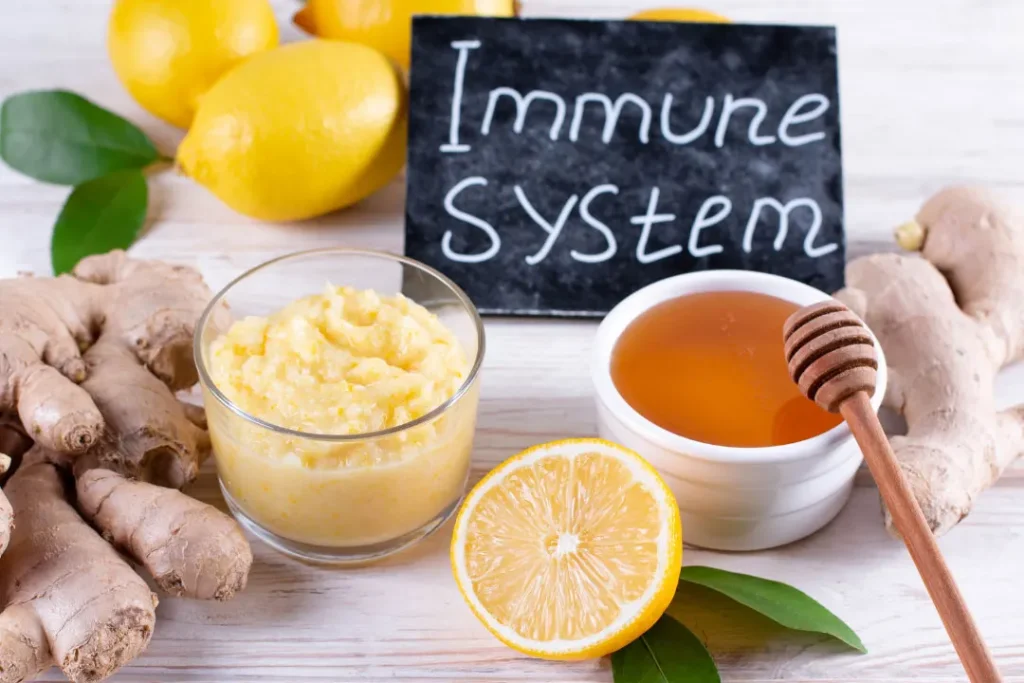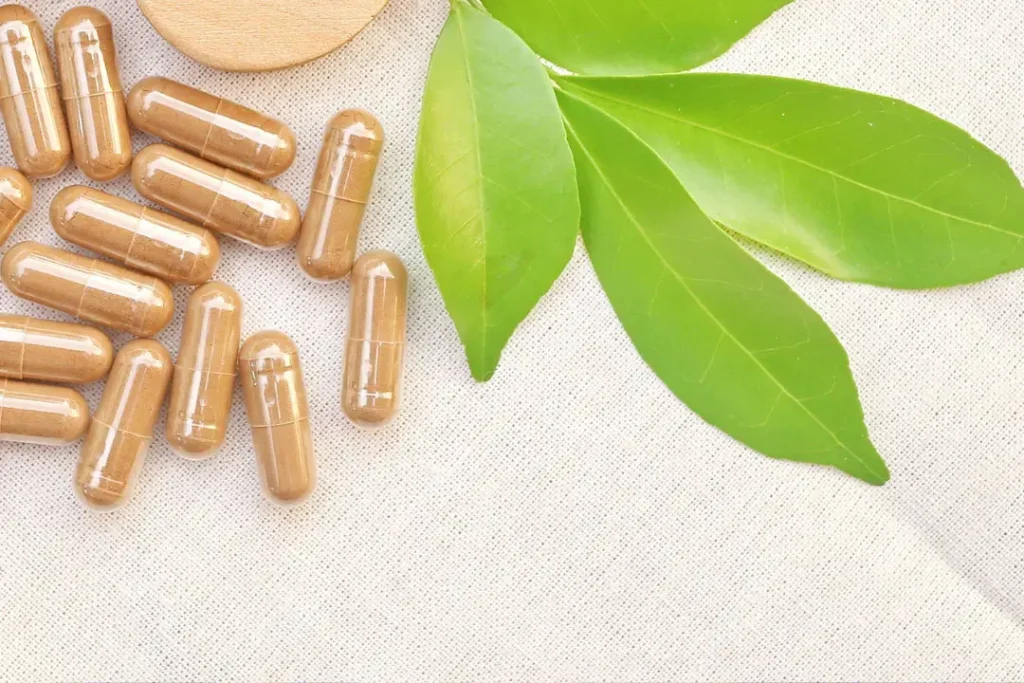Canthaxanthin is a naturally occurring carotenoid, present in a wide variety of plants, fungi, and microorganisms on Earth. It is one among the more than 600 known carotenoids and has a recognizable orange-red color. Canthaxanthin’s structure is comparable to that of beta-carotene, which is a precursor to vitamin A. Eight isoprene units make up the structure of canthaxanthin, which is a xanthophyll. It differs from other carotenoids by having hydroxyl groups on its cyclic end groups. This article will explore canthaxanthin’s properties, considerations for usage, and more.
You May Also Like:
5 Great Health Benefits of ElevATP: From Increased Energy to Better Brain Function…
BioPerine®: Benefits, Dosage, Side Effects, Drug Interactions, and Other Important Information
Nature of Canthaxanthin
Numerous plants, fungi, and bacteria produce the xanthophyll carotenoid canthaxanthin. Its key structural distinction from other carotenoids is the presence of hydroxyl groups on its cyclic end groups. This particular feature distinguishes it as a xanthophyll. Canthaxanthin exhibits a long conjugated polyene chain and eight isoprene units in its chemical makeup. This particular aspect of its makeup determines its light-absorbing qualities and antioxidant potential.
The main functions of canthaxanthin in natural sources are light absorption and as defense against photo-oxidative damage. Part of what aroused researchers’ attention in its possible health advantages for humans was its role in the field of biology as well as its chemical characteristics, especially its strong antioxidant potential.
Health Benefits
The antioxidant properties of canthaxanthin in one of its primary health benefits to you. Those of you living with Age-related macular degeneration (AMD), a disorder associated with oxidative stress, may experience an easing of symptoms with consumption of this supplement. Although further study is required in this area, several studies have shown that it may also enhance skin health by enhancing its resilience to UV-induced damage.
Additionally, new data raises the possibility that canthaxanthin has anti-cancer capabilities. According to in vitro research, it can stop the development of several cancer cell types and trigger apoptosis. These results need to be verified in human studies, however.

Chemical Structure
Canthaxanthin’s long, conjugated polyene chains have the ability to transmit energy throughout the chain and stabilize free radicals adds to its antioxidant activity. Its antioxidant qualities are principally responsible for canthaxanthin’s physiological effects. Reactive oxygen species (ROS) generation and the body’s capacity to neutralize them are out of balance, which leads to oxidative stress. As an antioxidant, canthaxanthin can interact with these ROS to neutralize them and stop them from harming cellular structures.
Because of its hydrophobic hydrocarbon backbone, canthaxanthin is stored in lipid-rich areas of cells and is absorbed in the digestive system after intake with the help of dietary lipids and bile acids. Chylomicrons, a kind of lipoprotein, are used to package it and the lymphatic system is used to transport it all throughout the body. When dietary fats are present, your body’s absorption of canthaxanthin increases. Canthaxanthin is incorporated into the cell membranes of many tissues throughout the body, including the skin, liver, and adipose tissue.
Physiological Mechanisms
Canthaxanthin begins to act as a protective agent once it enters the tissues. Reactive oxygen species (ROS), unstable chemicals that might harm cellular structures, are neutralized by canthaxanthin. Stabilizing free radicals and preventing them from harming cellular structures is accomplished by electron delocalization along the conjugated polyene chain, an aforementioned feature of canthaxanthin’s chemical structure.
Further, there are hints from scientific data that canthaxanthin could control immunological reactions. Though the exact processes are unknown, researchers speculate that canthaxanthin may have an impact on T helper cells, which are crucial to your immune system’s operation.
Continuing, new research suggests that canthaxanthin may have an anti-cancer impact, including modification of cell signaling pathways and direct engagement with the cell cycle. More investigation is required to properly define the routes by which canthaxanthin exerts its effects in the human body since these processes are still not fully known.


Optimal Dosage
Due to the lack of studies conducted with human trials, the ideal canthaxanthin dose is still unknown. Generally speaking, a safe dose seems to fall between 4 and 8 mg/day, although people should speak with a doctor before beginning any new supplement program.


Side Effects
While modest dosages of canthaxanthin are often well tolerated, greater amounts may result in a benign disease called canthaxanthin retinopathy, where crystals accumulate in the retina. Usually, this goes away as ingestion of the supplement stops. Other possible adverse effects include skin discoloration, digestive discomfort, and, in rare instances, liver damage.


Potential Substance Interactions
Canthaxanthin has not yet been well explored in terms of particular substance interactions, which necessitates that you exercise caution while using it in conjunction with other medications or dietary supplements.
Canthaxanthin’s interactions with other drugs have not been thoroughly investigated. Canthaxanthin, however, depends on dietary fat to be absorbed in the stomach. As a result, chemicals that affect fat absorption may have an effect on how well canthaxanthin is absorbed and used. For instance, medications like orlistat, a weight-loss treatment that blocks pancreatic lipase, an enzyme required for fat digestion, would potentially decrease the absorption of canthaxanthin since it is fat-soluble and is absorbed together with dietary fats.
Moreover, compounds that alter the enzymes responsible for the metabolism and transportation of canthaxanthin may have an impact on the bioavailability of the compound. Some statins, which are drugs used to decrease cholesterol levels, could serve as an illustration of this since they have an effect on the same family of enzymes (Cytochrome P450), which may be implicated in your metabolism of canthaxanthin.
Canthaxanthin may interact with drugs that impact liver function since the liver is crucial for the metabolism and storage of chemicals that are fat-soluble. Therefore, if you are a member of the group people who live with liver illness or are taking drugs that have an impact on liver function should exercise care when thinking about using canthaxanthin supplements.
Last but not least, canthaxanthin may potentially have an additive impact when combined with other carotenoids or antioxidants, boosting not only the total antioxidant capacity, but also raising the risk of adverse consequences.
Given the paucity of thorough research on the interactions between canthaxanthin and other substances, it is crucial for you to speak with medical professionals before beginning a supplementing regimen, particularly if they are simultaneously taking other drugs or supplements. Future studies will be crucial in elucidating these possible interactions and improving our comprehension of the safety and effectiveness profile of canthaxanthin.
Responsible Use
When using canthaxanthin as a nutritional supplement, it is essential for you to carefully assess your health requirements, possible hazards, and advice from a healthcare professional. Despite the fact that its antioxidant capabilities show promise in a number of health applications, further study is required to completely comprehend its effectiveness, ideal dose, and possible interactions with other drugs. It shouldn’t be taken in place of a balanced diet and healthy lifestyle, just like any other supplement.
Canthaxanthin:
Conclusion
Canthaxanthin is a supplement with potential to help those with a range of medical needs, from increased presence of antioxidants to improved skin health to anti-cancer treatment. While the potential to benefit you is powerful, there is still a lot to learn about the potential benefits as well as potential hazards. A larger body of research than which currently exists is necessary to make generalizations about how canthaxanthin can help you. At this time, nominal dosages are recommended, but not much is needed for you to begin to notice and feel the positive difference consumption of canthaxanthin could make in your life.


References:
- “Carotenoids in the retina — A review of their possible role in preventing or limiting damage caused by light and oxygen.” Retrieved From: https://link.springer.com/chapter/10.1007/978-3-0348-7460-1_29
- “Canthaxanthin (β, β -carotene-4,4′-dione) is a keto-carotenoid that is generated naturally in a wide variety of living organisms that have a strong antioxidant activity.” Retrieved From: https://www.sciencedirect.com/topics/agricultural-and-biological-sciences/canthaxanthin
- Genetic Modification of Mucor circinelloides for Canthaxanthin Production by Heterologous Expression of β-carotene Ketolase Gene. Retrieved From: https://www.frontiersin.org/articles/10.3389/fnut.2021.756218/full
Important Note: The information contained in this article is for general informational purposes only, and should not be construed as health or medical advice, nor is it intended to diagnose, prevent, treat, or cure any disease or health condition. Before embarking on any diet, fitness regimen, or program of nutritional supplementation, it is advisable to consult your healthcare professional in order to determine its safety and probable efficacy in terms of your individual state of health.
Regarding Nutritional Supplements Or Other Non-Prescription Health Products: If any nutritional supplements or other non-prescription health products are mentioned in the foregoing article, any claims or statements made about them have not been evaluated by the U.S. Food and Drug Administration, and such nutritional supplements or other health products are not intended to diagnose, treat, cure, or prevent any disease.
